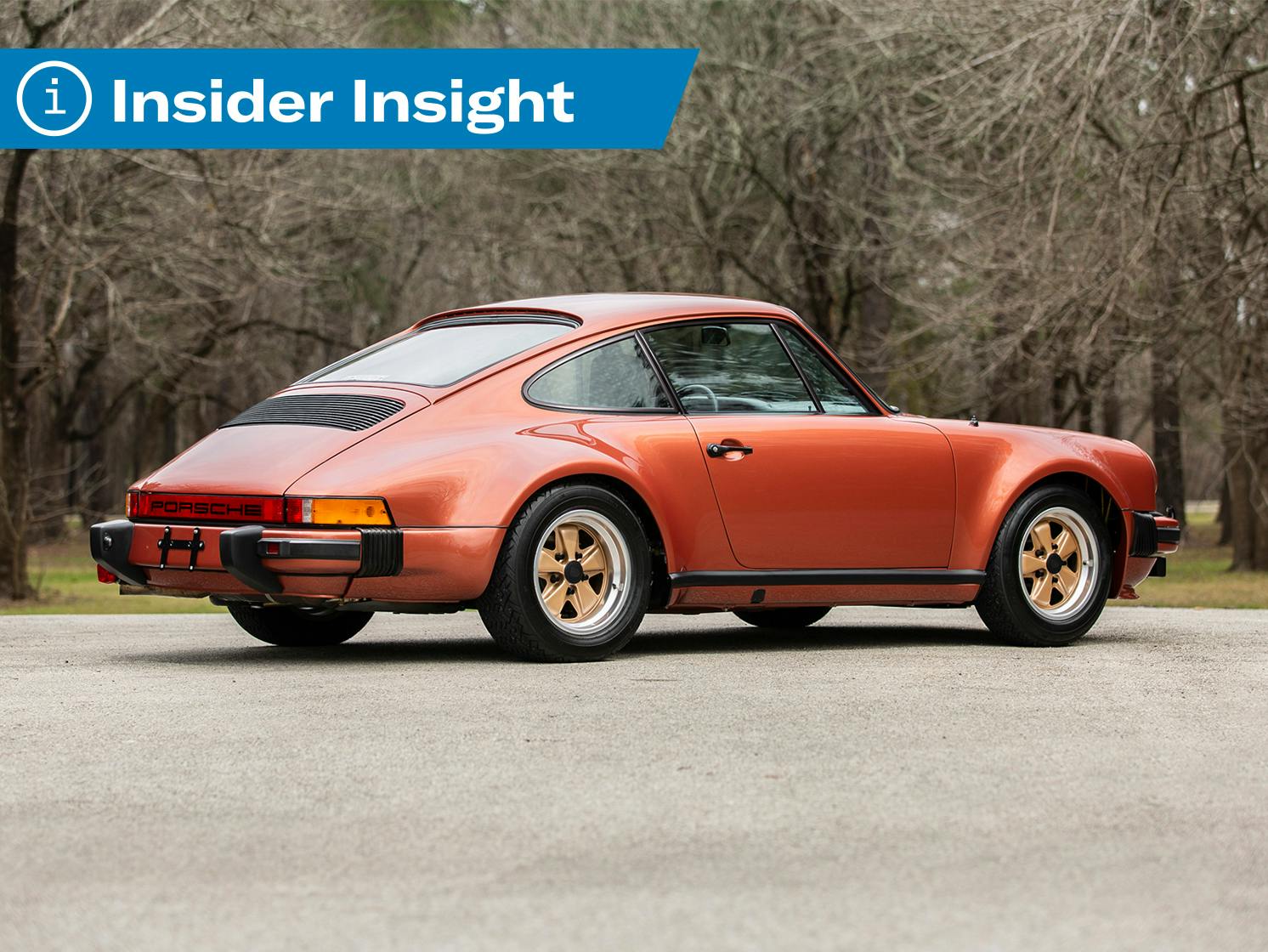The rise, fall, and resurgence of Porsche’s 911 Turbo (930)

The Porsche 930 Carrera Turbo, the first 911 to carry that special T-word on its rump, has a reputation for being incredibly exciting to drive but also a bit of a handful. The same could be said from a valuation perspective. It’s one of the most volatile vehicles in the collector market.
I don’t care who you are, where you went to school, how many spelling bee plaques you have on the wall, or letters you’ve accumulated behind your name: The Porsche 930 market is a challenge for anyone to comprehend. From cold to hot to cold in a year to piping hot again, it’s always on the move.
That wasn’t always the case. In 2010 you could get a 930 in excellent condition for a little more than $40,000. Shortly after that, the collector vehicle market went crazy—especially for Porsches and Ferraris. Homologation cars and “firsts” found themselves in the crosshairs of collectors around the world. By 2016, that same $42K 930 was now $235,000. Give me a shout if you could have predicted such a rocket ride. Then, by 2020, values tumbled to $140K. I’ll buy you dinner if you predicted that and the prior increase.
The rollercoaster ride has only sped up this year. In 2021, we saw eleven 930s sell for more than $200K. In the first seven months of 2022 we have seen 19 cars sell above that threshold. That includes a world record price (excluding Steve McQueen’s car for $2.145M) set in March 2022. Is this the second coming of the 930?
Given all that volatility, you’d need to have a screw loose to try and predict what might come next. And yet, I’m about to do just that.
Skeptics think we’re talking out of our tailpipes when predicting markets and values, and we can understand why. Many data sources converge to create a complex story of a vehicle’s market. The 930's is one of the more tumultuous tales. Yet data from the insurance side of Hagerty’s business can help provide context.
First, we can get a sense of how active the market for 930s is at any point by looking at the 12-month count of 930s added to insurance policies. That number peaked in June 2015, exactly one year before the average sale price peaked at $148,000 in June 2016.
As the average price rose, the 12-month number of cars added to policies dropped. By June 2016, the activity was down 30 percent from 2015. It bottomed out in August 2019, when fewer than half as many 930s were being added to Hagerty policies. Put another way: High demand led sellers to increase prices, which led to fewer people buying them. Economics 101 at work.
Now let’s look at more recent activity. In August 2020—before we detected any big movement in selling prices—the 12-month count increased a staggering 90 percent. It stabilized at that level through the better part of the pandemic until March 2022, when it began slowly dropping. March 2022 happened to be the month that a new record 930 sale price was set. If we are looking at history repeating itself, then the 12-month average sale price will drop off one year from now.
That 911 Turbo values would be so sensitive to demand makes more sense when we step back and think about where the model fits in the realm of valuable cars. We’re talking about a mass-produced vehicle (global production exceeded 30,000) that appeals to the well-off and the ultra-rich alike. This is the magic formula that allows Porsche today to sell both a $100K 911 and a near-$300K 911 Sport Classic with a $12,830 “paint-to-sample” option. Yet it also means 930 prices cannot be sustained by a handful of top-tier collectors. When prices soar too high for the masses, demand collapses.
The demographic details in our insurance data bear out this narrative. At the beginning of the last decade, there was strong interest in the 930 from Gen-X collectors. Around the 2016 peak in 930 prices, they dropped out. The vast majority of people calling us for quotes on insurance on these cars were baby boomers—the generation with the most wealth. As prices receded in 2017 and 2018, the Gen-Xers came back, along with some millennials and Gen-Z buyers.
Even more telling is the percentage of buyers who are top-tier collectors at any given time. In Hagerty-speak, these folks fit under the SSG, or Signature Services Group. On the whole, they represent a small but significant chunk of people who call Hagerty for insurance quotes on 930s—usually between 5 and 10 percent. You might think these deep-pocketed collectors have the ability to steer values—and they likely do, to a certain extent. Yet what we see with the 930 is that after prices peaked in 2016, and “regular” collectors receded, interest from SSG clients was not enough to hold up prices. When values bottomed out just before the pandemic, the regular collectors returned, and the cycle started anew.
What we have is a car that seems volatile but is, in the long-view, quite stable. The 930 Turbo appeals to a broad set of collectors, both young and old, a few of whom have more resources than the rest. That means the car’s value has a clear ceiling—when prices get too high the masses leave—but also that it always has a clear floor; because, inevitably, the masses come back.


THE CAR AT THE BEGINNING OF THE ARTICLE IS NOT A 930 !